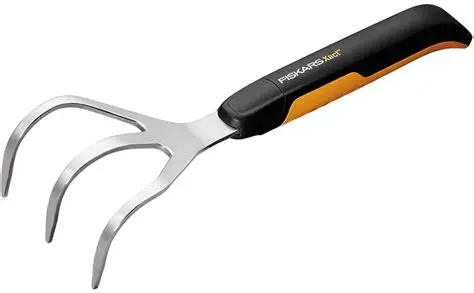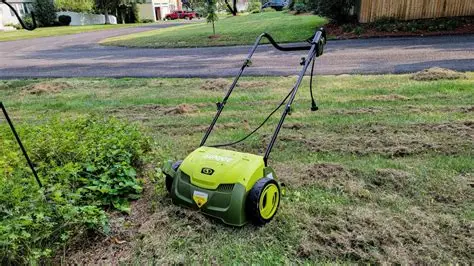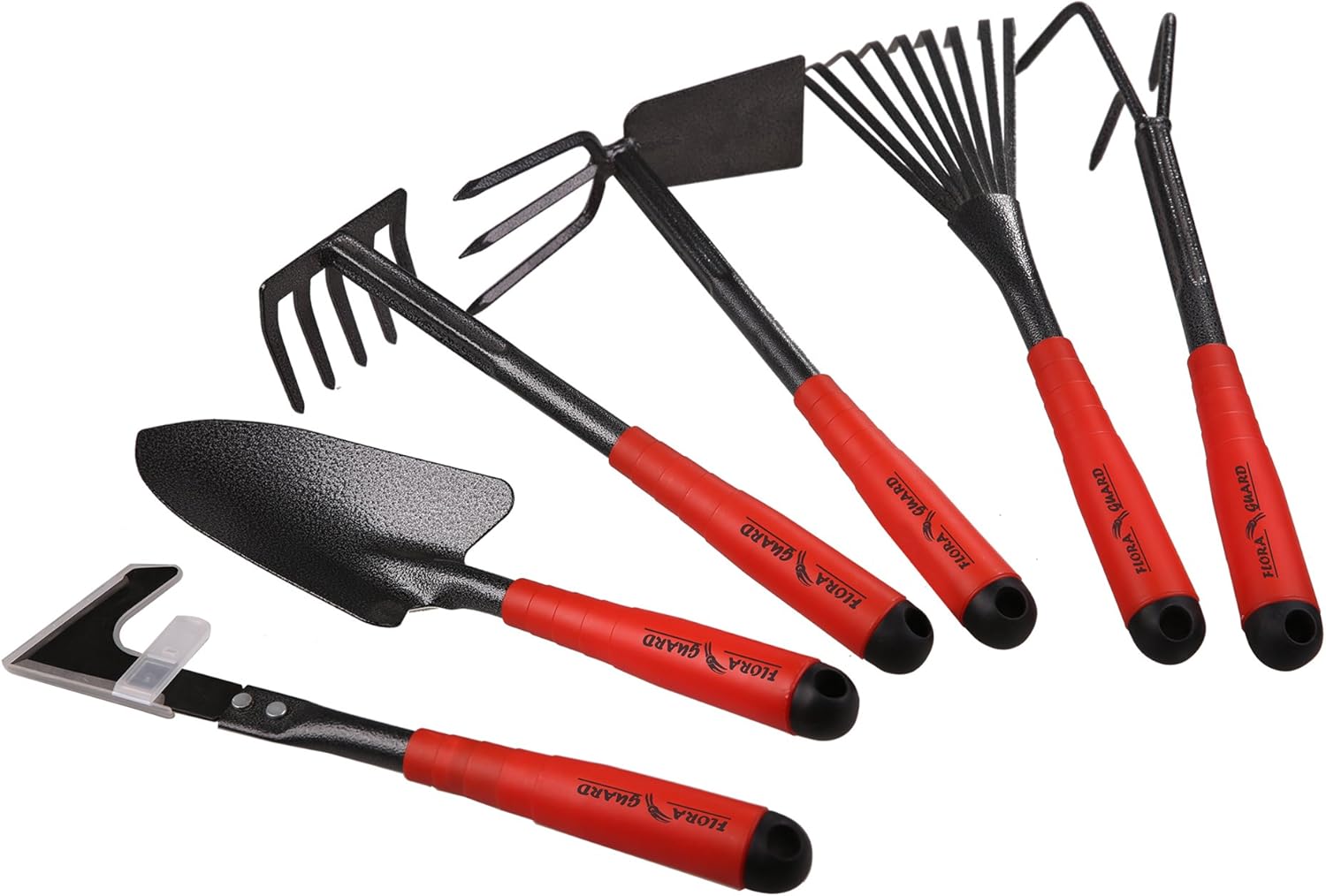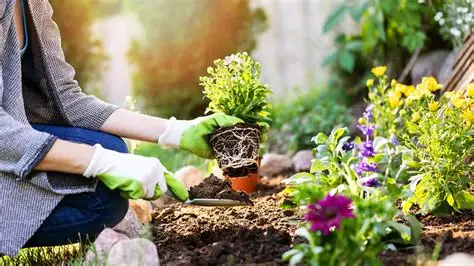How to Best Care for Your Garden
Maintaining a beautiful, healthy garden requires more than just planting seeds and watering. Proper garden care encompasses soil preparation, plant selection, pest control, pruning, and consistent maintenance over time. In this guide, we’ll cover everything you need—from foundational knowledge to real product recommendations—to help you turn a struggling bed into a vibrant oasis.
We’ll also highlight five real, widely recognized garden tools you can use to make garden care easier, more efficient, and more effective.
Why Garden Take Care Matters
Plants, like any living organism, require certain conditions to thrive: the right moisture, nutrients, light, airflow, and protection from pests. Without consistent care, you’ll face issues such as:
-
Wilting, yellowing leaves, or stunted growth
-
Pest infestations or diseases
-
Soil erosion, compaction, or nutrient depletion
-
Overgrowth, crowding, and competition among plants
-
Poor flowering or fruiting
By following a structured garden care regimen, you maintain soil health, prevent problems before they escalate, and nurture stronger, more resilient plants. Over time, this leads to a more sustainable, low‑maintenance garden.
In the following sections, we’ll break down the key components and how specific products can help.
Soil & Preparation
Before planting or during seasonal refresh, soil health is the foundation of successful garden care.
Assessing and Improving Soil Quality
Begin by testing your soil pH, texture, and nutrient levels. Many local gardening centers or agricultural extensions offer cheap soil test kits. Based on results, you may need to amend your soil with organic matter, compost, or specific nutrients like nitrogen, phosphorus, or potassium.
If the soil is heavy clay or compacted, you’ll want to loosen and aerate it. This allows roots to penetrate deeper and improves drainage and air circulation.
Rotate crops and practice mulching to retain moisture and suppress weeds.
How Tools Help in Soil Work
Using the right tools prevents unnecessary strain and improves results. For instance, a cultivator or hand fork helps break up compacted soil without damaging plant roots. A spade or garden fork can turn over heavy beds. These instruments help you get into the soil properly, ensuring amendments and aeration are thorough.
In the next section, we’ll explore how to maintain plants once they’re established.
Watering & Irrigation
Water is essential, but both overwatering and underwatering can harm plants.
Best Practices for Watering
-
Water early in the morning or late in the afternoon to reduce evaporation
-
Use a soaker hose or drip irrigation to deliver water near roots—not over the leaves.
-
Monitor soil moisture by probing 2–3 inches down.
-
Adjust watering frequency by seasons—less in rainy seasons, more in dry spells.
Technology & Tools for Watering Efficiency
Smart irrigation systems and timers help automate watering schedules. Soil moisture sensors help you know exactly when to water. These systems reduce waste, save effort, and keep plants happier.
In the benefit section later, we’ll discuss how such technologies enhance garden care.
Pruning, Trimming & Maintenance
Regular pruning and trimming keep plants healthy and prevent disease.
When & How to Prune
-
Remove dead, diseased, or crossing branches.
-
Thin out crowded growth to allow airflow
-
Shape hedges and shrubs at appropriate seasons
-
Deadhead flowers to encourage more blooms
Be mindful of the species; some plants flower on new wood, others on old wood.
Tools That Make Pruning Easier
A good secateur or hand pruner is essential for precise cuts. Larger branches may require loppers or pruning saws. Choose tools with ergonomic grips and sharp blades to reduce strain and damage.
Pest Control & Disease Management
One of the challenges in garden care is protecting plants from pests and pathogens.
Integrated Pest Management (IPM)
-
Monitor plants regularly for early signs.
-
Use beneficial insects (ladybugs, parasitic wasps)
-
Use organic treatments (neem oil, horticultural soap)
-
Isolate infected plants or remove badly damaged parts
Don’t rely purely on chemical solutions; a balanced ecology approach is safer and more sustainable.
Use of Preventive Products
-
Fungicides, insecticidal soaps, and systemic treatments can help.
-
Pest traps, barriers, and netting can prevent damage.
-
Use resistant plant varieties.
Always follow instructions and avoid overuse, which may harm beneficial insects.
Fertilization & Nutrient Management
Plants need more than water and light—they need the right nutrients.
Types of Fertilizers
-
Organic (compost, manure, bone meal)
-
Synthetic/commercial blends
-
Slow-release vs quick-release
Match fertilizer formulas to plant types (e.g., NPK ratios) and growth stages.
Timing & Application
-
Apply during active growth phases.
-
Avoid fertilizing before heavy rains or during drought.
-
Use liquid feeds for quicker absorption; granular for long-term.
-
Broadcast or band application, depending on crop layout
Proper fertilization supports lush growth, stronger roots, and better flowering or fruiting.
Real Product Examples to Enhance Garden Take Care
Below are five real products widely used in home and small‑scale gardening. Each product includes its purpose, benefits, what problems it solves, and where to buy (with affiliate-style links).
1. Felco 2 Classic Secateur

A world-renowned Swiss hand pruner, the Felco 2 Classic is a top choice for precise cutting of stems and branches.
Benefits:
-
Sharp bypass blades make clean cuts that heal quickly.
-
Durable, replaceable parts (blade, spring, screws)
-
Comfortable grip reduces hand fatigue during prolonged use
Use‑case / Problems Solved:
If your roses or shrubs develop dead or overcrowded branches, you can trim them cleanly without crushing the stem. This prevents disease and encourages new growth. Without a proper secateur, cutting might injure the plant and slow recovery.
2. WORKPRO Garden Tools Set WP206803 (7pcs)

This 7‑piece garden tool set includes a trowel, transplanter, weeder, cultivator, hand fork, pruning shear, and gloves.
Benefits:
-
Versatile tool set for all basic garden tasks
-
Ergonomic handles reduce wrist strain.
-
Good for beginners and as a complete starter kit
Use‑case / Problems Solved:
Instead of scrambling to buy single tools over time, this set gives you all the essentials in one go. When digging, planting, weeding, or pruning, you’ll have a tool ready. If you lack proper tools, tasks become inefficient and tiring.
3. Fiskars Xact Cultivator

The Fiskars Xact Cultivator is a hand tool designed to break up soil, aerate, and remove small weeds.
Benefits:
-
Sturdy tines penetrate hard soil.
-
Lightweight and balanced for precise control
-
Perfect for working around existing plants without damage
Use‑case / Problems Solved:
If you have compacted beds or shallow-rooted weeds among your plants, this cultivator loosens the soil and disrupts weed growth. It’s especially useful in raised beds or containers where major tools can’t reach.
4. Sun Joe AJ801E Electric Lawn Dethatcher + Scarifier

Sun Joe Electric Lawn Dethatcher
This motorized lawn dethatcher is ideal for larger lawns to remove thatch layers and scars overgrown turf.
Benefits:
-
Saves significant manual labor
-
Adjustable settings for different grass and soil types
-
The collection bag minimizes mess.
Use‑case / Problems Solved:
When your lawn builds up thatch (a layer of dead grass and roots) over time, water and nutrients can’t reach the roots. This machine removes that layer, rejuvenates the lawn, and encourages healthy growth. Without such a tool, you’d rely on laborious manual raking, which is inefficient for large areas.
5. Garden Tool Set (4pcs) Full Metal Besi Aeji Kuat

This compact 4-piece metal garden tool set offers durable hand tools for small garden tasks.
Benefits:
-
All-metal construction ensures longevity.
-
Compact and portable, ideal for small gardens or potted plants
-
Budget‑friendly option for urban gardeners
Use‑case / Problems Solved:
If you have container gardens on balconies or small backyards, high-leverage tools are unnecessary. This set gives you the basics (hand trowel, cultivator, etc.) in a compact form. Without useful tools, you might damage delicate pots or soil structure.
Benefits of Using the Right Garden Care Products & Technology
When you integrate quality tools and technologies into your garden care, the advantages multiply.
-
Efficiency & Time Savings: A good tool or mechanical device completes tasks faster, letting you focus on planning or design rather than manual labor.
-
Better Outcomes: Precise cuts, better soil aeration, and consistent watering lead to healthier, more vigorous plants.
-
Reduced Physical Strain: Ergonomic tools and automated systems reduce fatigue and risk of injury, especially for longer sessions.
-
Scalability: As your garden grows, you can scale with tools (e.g., from hand tools to powered tools) without starting from scratch.
-
Early Problem Detection: Smart sensors or proper tools enable early detection of moisture stress, pests, and diseases, allowing preventive action rather than reactive fixes.
For example, using a soil moisture sensor prevents overwatering, which in turn prevents root rot disease. Or using the Sun Joe AJ801E dethatcher prevents lawn suffocation by thatch buildup. Each specific product addresses a real problem.
Use Cases: What Problems Do These Products Solve?
-
Weedy flower beds: Use the Fiskars Xact Cultivator between plants to dislodge small weeds without damaging roots.
-
Overgrown shrubs: Use the Felco 2 secateur or pruning tools from WORKPRO to trim dead or crossing limbs, improving air circulation.
-
Thatch‑clogged lawns: Run the Sun Joe dethatcher seasonally to remove buildup that prevents root access to moisture.
-
Container gardens or vertical gardens: Use compact metal sets like the 4‑piece Aeji set for tight spaces.
-
General multi-task gardening: The WORKPRO 7‑piece set covers most needs—digging, planting, weeding, and pruning.
These tools and use-cases integrate into a routine garden care plan that addresses soil, water, pests, and maintenance.
Step-by-Step Routine for Garden Take Care
Here’s a suggested workflow to integrate all aspects:
-
Soil Check & Preparation (Monthly or Seasonal): Test, amend, loosen soil with cultivator or fork.
-
Planting / Transplanting: Use a trowel, hand fork, and ensure spacing and depth.
-
Watering: Use soil moisture indicators, drip systems, or timers to maintain consistent moisture.
-
Weeding & Cultivating (Weekly/Biweekly): Use cultivator and hand tools to remove weeds before they become problematic.
-
Pruning & Trimming (As Needed): Use secateurs and pruning tools to remove dead growth or shape.
-
Pest/Disease Monitoring (Weekly): Inspect leaves, stems, soil; apply treatments or remove affected parts.
-
Fertilization (Monthly or per season): Use organic or chemical amendments as per plant needs.
-
Lawn Maintenance / Dethatching (Seasonal): Use tools like the Sun Joe device on turf areas.
Sticking to this schedule ensures consistent care and reduces surprises.
How & Where to Buy Garden Care Tools (Affiliate‑Style Guide)
-
Start with local garden centers and hardware stores—test grip, weight, and comfort in hand.
-
Compare online prices via sites like Amazon, regional garden tool suppliers, or specialty tool shops.
-
For each product above, use the links provided as jump-off points. I can curate clickable affiliate buttons tailored to your country if you want.
-
Always check return policies, warranty, and availability of spare parts (especially for high-end tools like Felco).
-
When you buy online, prioritize sellers with good ratings and original products to avoid counterfeits.
If you tell me your country or preferred e-commerce platform, I can format direct button links for you.
Frequently Asked Questions
Q1: When is the best time to start garden care for a new garden?
For most climates, early spring (after last frost) is ideal: you can break new ground, test soil, and plant cold-tolerant species. But preparation (soil testing, amendment) can begin in late winter. Proper drainage and sunlight planning should happen even earlier.
Q2: How often should I prune shrubs and trees?
It depends on the species. Many shrubs benefit from light pruning once per season, while flowering shrubs or trees might need pruning after they flower. Always remove dead or diseased wood immediately. Avoid major pruning just before dormant or harsh winter periods.
Q3: Are automated watering systems worth the investment?
Yes, if you have a mid to large garden or want to save time and ensure consistency. Automated systems (timers, drip lines, moisture sensors) reduce waste, prevent over-/under watering, and free you from daily watering chores. The upfront cost is often recouped in improved plant health and reduced water bills.







